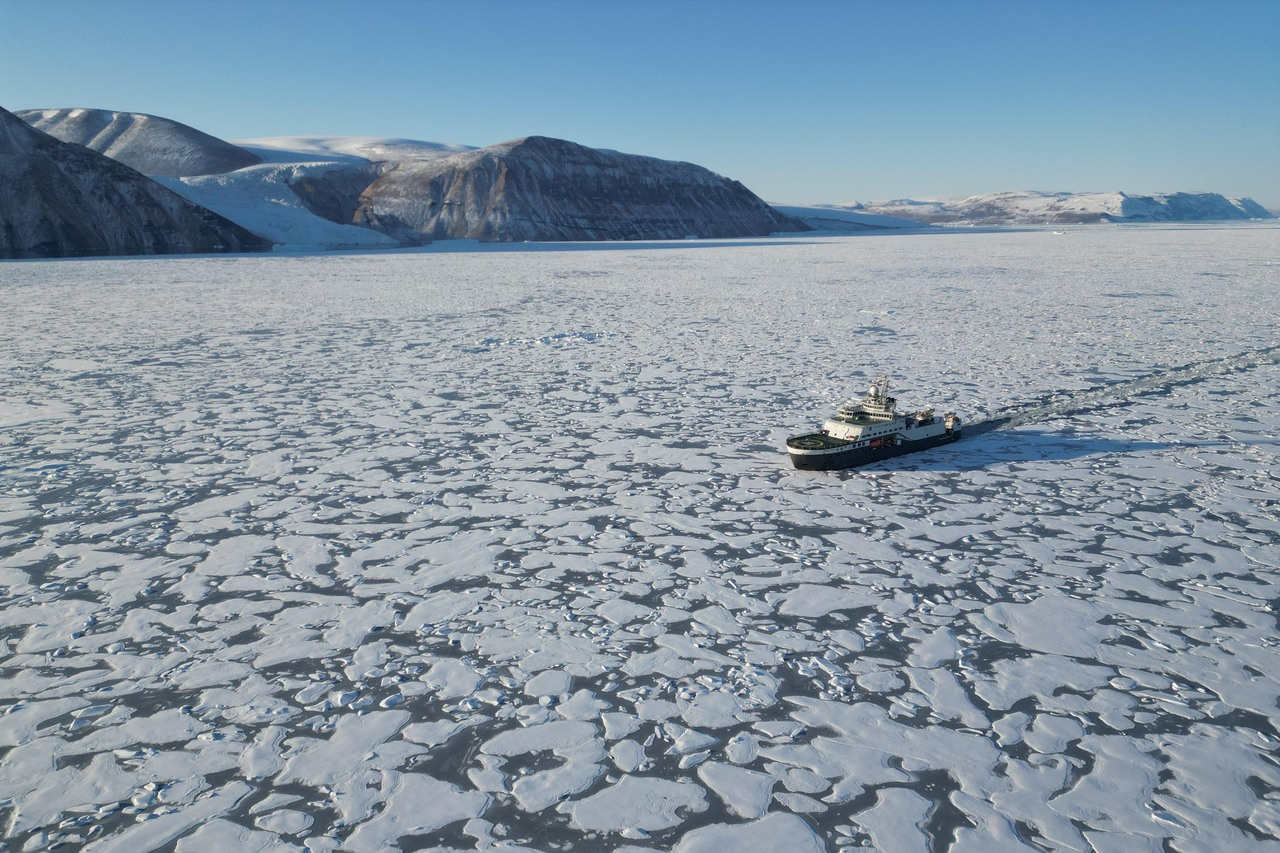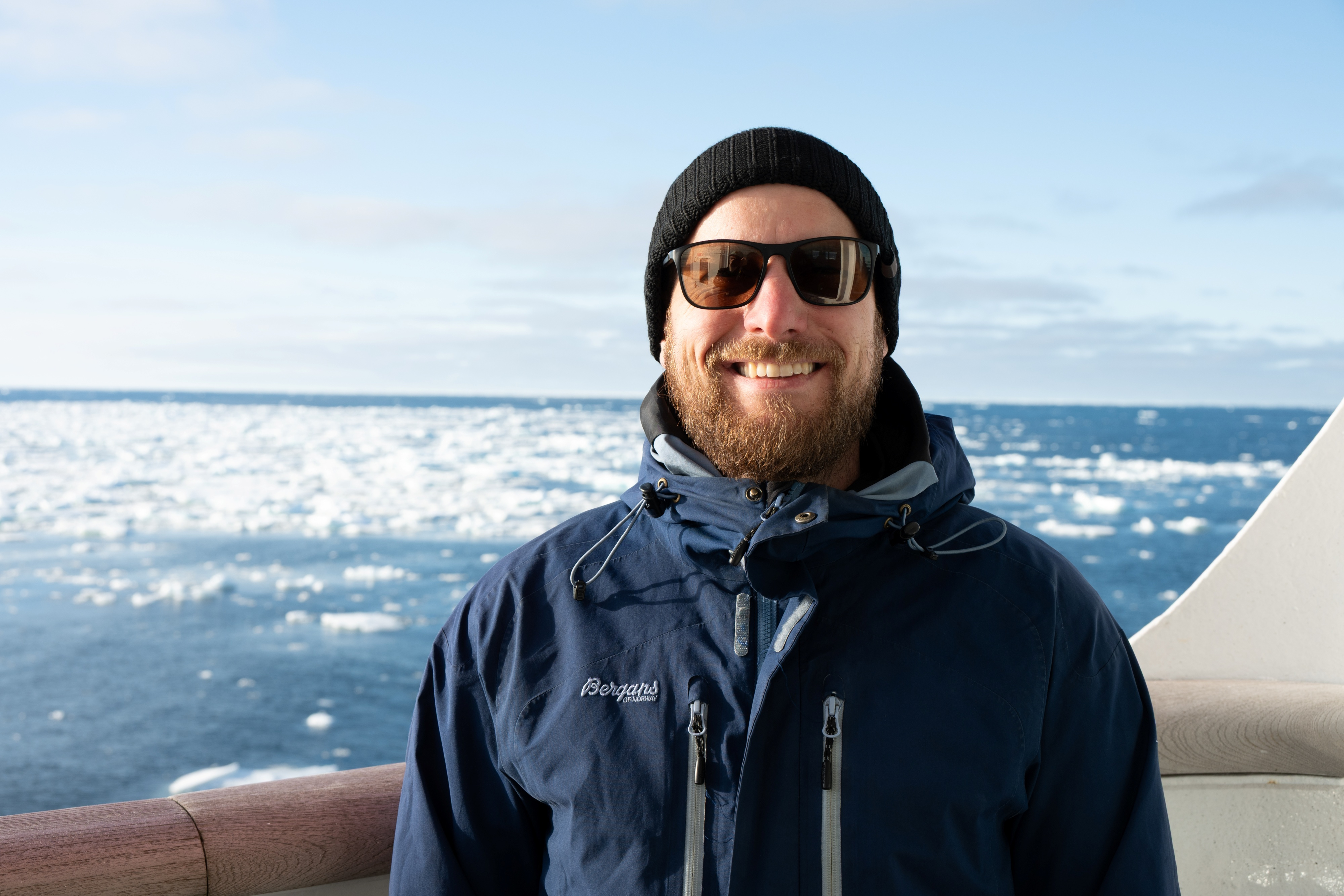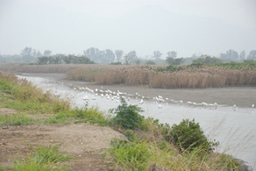Behind the paper "Natural hydrocarbon seepage at the Northeast Greenland continental shelf"
Published in Earth & Environment and Research Data

Rising concentrations of greenhouse gases in the atmosphere since preindustrial times have caused the Arctic to warm at a faster pace than the rest of the planet. This phenomenon, known as Arctic amplification, drives dramatic environmental changes such as ice-sheet melting and ocean warming. These processes may, in turn, influence greenhouse gas emissions from natural geological sources, including gas hydrates stored within the seafloor. Yet, despite their potential importance, the distribution and contribution of such natural methane sources remain poorly constrained—particularly around Greenland, one of the least explored regions of the Arctic Ocean.

In 2023, I began my Marie Skłodowska-Curie project GreenFlux (“Effect of climate change on greenhouse gas fluxes from marine Arctic regions”), funded by the European Union under Horizon Europe (grant agreement No. 101060851). The goal of GreenFlux is to establish a scientific basis for understanding how geological processes control greenhouse gas emissions from marine sediments. To achieve this, I have combined data and approaches from palaeoceanography, geology, sedimentology, and geophysics, and—just as importantly—built a collaborative team of co-authors whose expertise has been invaluable throughout this work.
A long-standing question in geoscience is whether seafloor methane really matters. How much methane is stored? How variable are its fluxes? Can they change with oceanographic or climatic shifts? As one grant reviewer recently noted, “circa 2025, we are still in a geoscience quandary as to whether seafloor methane is important.” He was right and we need to find new ways to actually make a difference — but that quandary exists partly because vast areas of the ocean and especially of the Arctic remain unmapped and inaccessible.

Our study focuses on the Northeast Greenland shelf—a region more than five times the size of Denmark, and one of the unmapped margins in the Arctic. Research here faces extreme logistical challenges: sea ice restricts access for most of the year, icebergs threaten equipment, polar nights limit visibility, and there are no nearby settlements for support. Historically, most data from this region were collected by the oil and gas industry, attracted by its high hydrocarbon potential (estimated at 6675 million barrels of oil equivalent). As industrial exploration declined due to environmental and economic factors, these datasets became available for scientific use—offering a rare opportunity to study this remote environment.
Joint TGS/VBER Expedition EGS12 in 2012 to Northeast Greenland. Video by Stéphane Polteau (VBER).
Using these data, we were able to map this blank spot on the Arctic map and identify entire fluid flow systems from their geological source to their surface expression. Our analyses reveal widespread natural seepage of oil and gas along the Northeast Greenland shelf—evidence of long-lived and active fluid flow in an area previously unstudied. The findings, published in Communications Earth & Environment, provide one of the first comprehensive insights into how such systems evolve under the combined influence of glacial history and tectonic activity.
These natural seepage sites may have broad ecological implications. Hydrocarbon release from the seafloor can affect oxygen and nutrient cycles, contribute to local ocean acidification, or, conversely, sustain unique ecosystems with seepage supporting microbial and benthic communities. Such environments may act as “oases of life beneath the ice,” where the steady flow of fluids supports the Arctic food web. However, our understanding of how these systems interact with the biosphere in Northeast Greenland remains limited—highlighting the need for continued research.
For me, this work represents more than a scientific contribution; it is a step toward filling a critical knowledge gap in one of the least explored parts of our planet. The Arctic still holds many secrets below its ice, and uncovering them is essential for understanding how natural processes fit into the broader picture of a changing climate.
Follow the Topic
-
Communications Earth & Environment

An open access journal from Nature Portfolio that publishes high-quality research, reviews and commentary in the Earth, environmental and planetary sciences.
Related Collections
With Collections, you can get published faster and increase your visibility.
Geology of the Moon
Publishing Model: Hybrid
Deadline: Jan 31, 2026
Drought
Publishing Model: Hybrid
Deadline: Dec 31, 2025




Please sign in or register for FREE
If you are a registered user on Research Communities by Springer Nature, please sign in